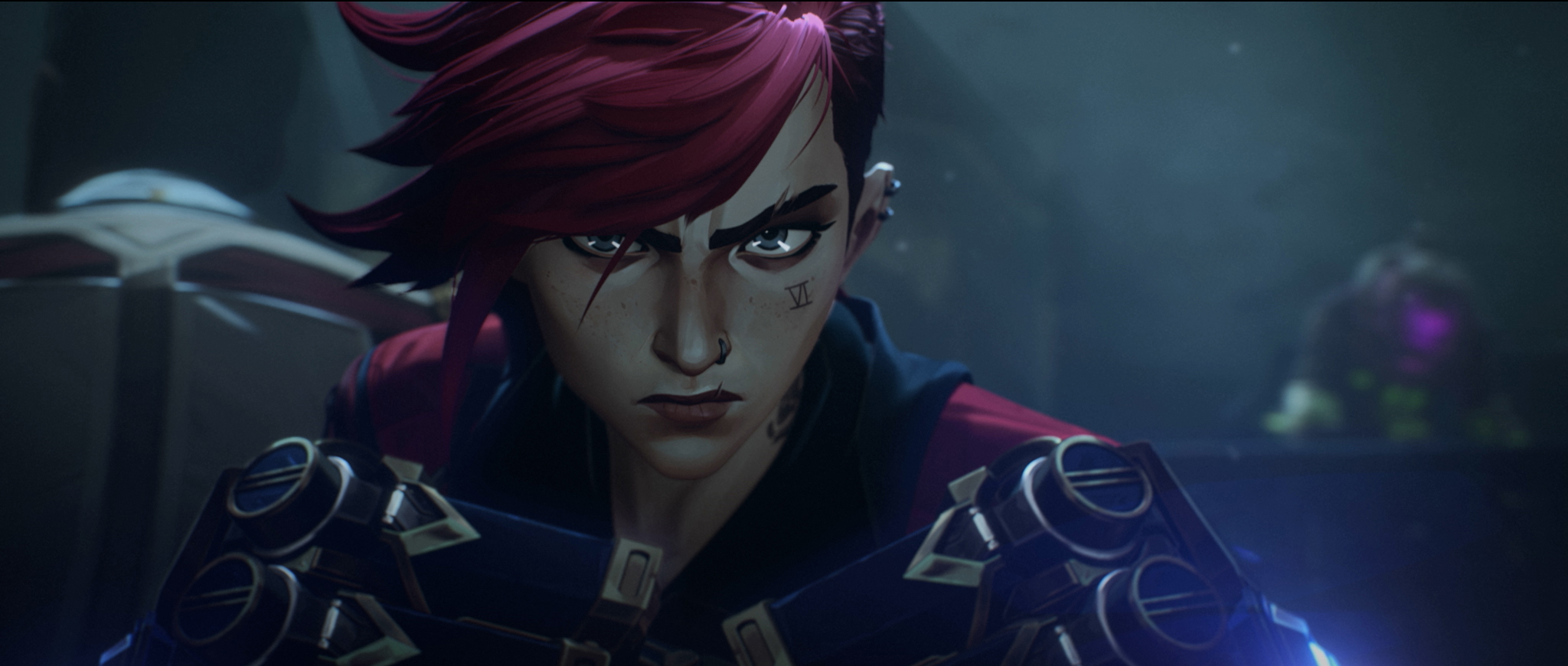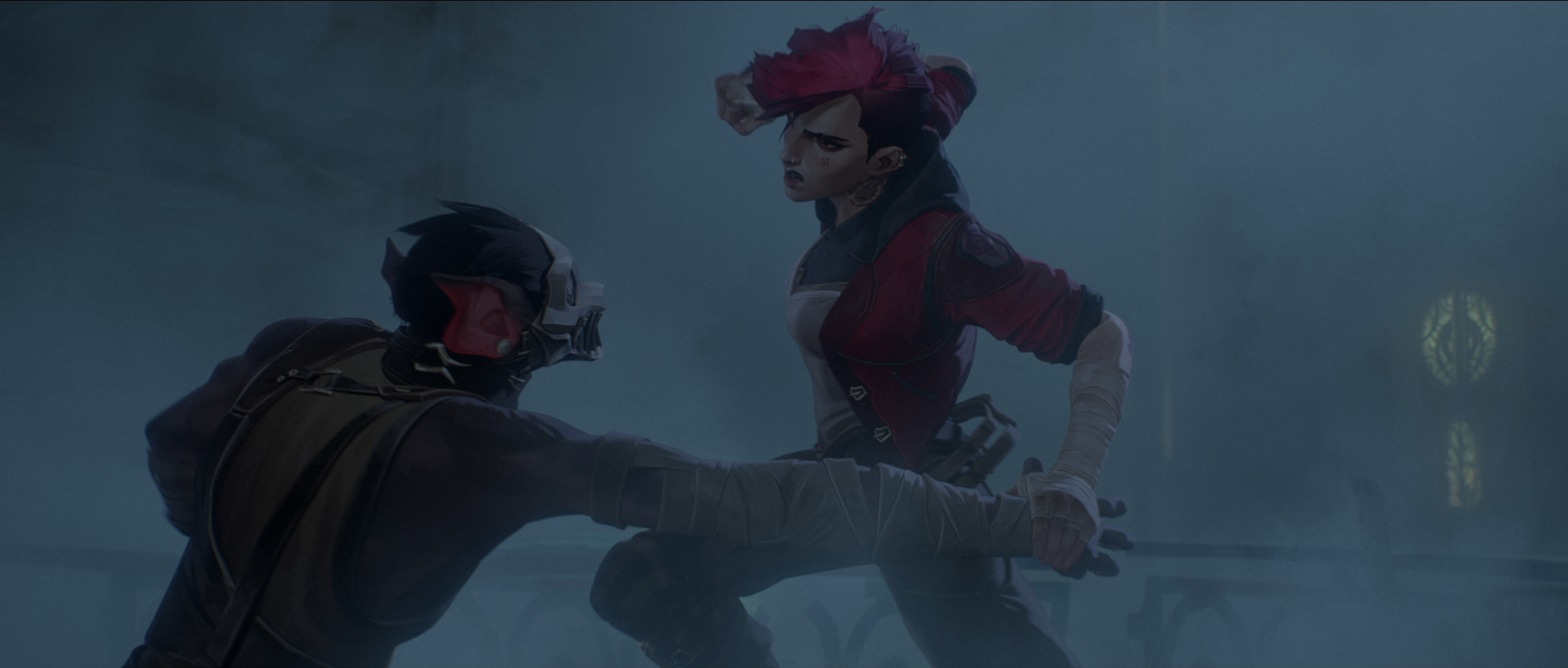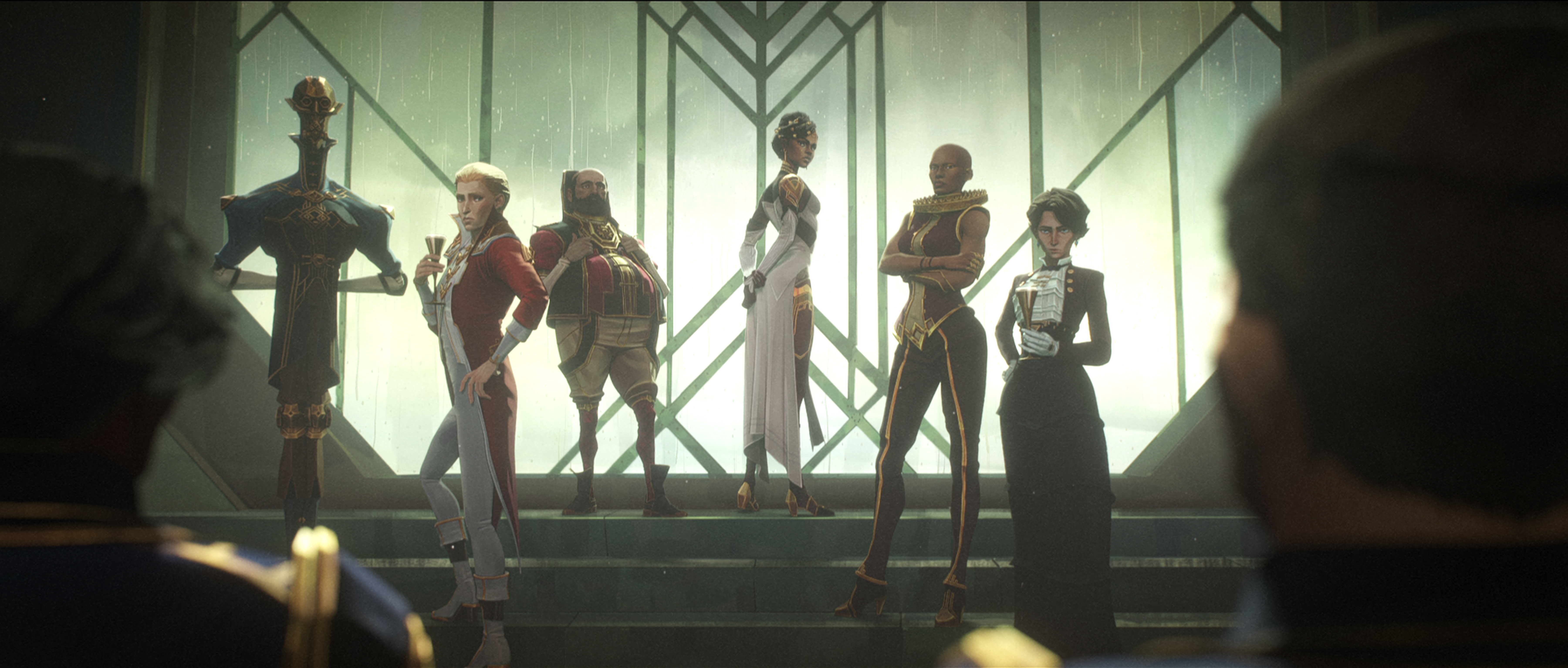Arcane: league Of Legends [Season 1] (2021)
The first thing to say is that the Netflix series Arcane is extremely good. The second is that it’s saddled terribly by its full name, Arcane: League of Legends, which will scare viewers averse to double-barreled titles, and those who know it’s a game adaptation. As someone who stopped gaming thirty years ago, I can confirm Arcane requires no knowledge of the League of Legends game; moreover, it never feels like a game adaptation. For a contrast, look no further than this 2014 spinoff League of Legends film, which feels quintessentially like a game adaptation from its first frames.
Arcane is fantasy, but it doesn’t recall Tolkien or Game of Thrones. Rather it’s a class-war drama with tinges of Metropolis (the silent original, not the anime) and much of Gundam (it’s a conflict without heroes). The series has two main strands. The first involves a pair of orphaned sisters, striving to survive in an underclass that’s envisioned as a rambunctious, often deadly undercity. The second strand involves an ambitious young student, Jayce, in the rich society that oppresses the proles, convinced his discoveries could change history.
The story begins with these worlds colliding as the girl Vi, her quailing preteen sister Powder and their ragtag gang launch an impromptu raid on the rich. They end up triggering an explosion in Jayce’s home; this has far-reaching consequences for him, though he won’t meet either sister until much later. Other important players include Silco, a scarred, soft-spoken crime lord, and Caitlyn, a brave but naïve girl in the upper world who becomes a law enforcer.
Many reviews stress the show’s splendid appearance, which I’ll get to in a moment. But as an anime fan, I was especially interested by the precedents Arcane sets for an “American” animated series, or at least an American-produced series – Arcane’s animation was made by the Paris studio Fortiche. The series ticks many of the same boxes that draw non-Japanese viewers to anime. For one thing, this is an adult series – there’s violence, on-screen death and a (justified) sex scene, differentiating it from the likes of the anime-esque Avatar: The Last Airbender.
Avatar is also a long-form serial with an ongoing story. There are nine episodes of around 45 minutes, equating to a 17 or 18-part anime, longer than most new anime today. It has a rock-inflected title sequence, many tentpole set-piece duels, shock character changes, and no guaranteed happy ending. It also, crucially, doesn’t rely on comedy – there is some humour, but less than most anime. And Arcane isn’t a superhero spinoff, which separates it from DC’s animated films or last year’s adult series, Invincible.
Arcane’s appearance also separates it from anime. It’s a remarkably lavish-looking combo of 3D CGI characters with elements that are both 2D and 3D. The visuals bring “airbrushed” to mind; if that tag sounds too arch, they’re also deeply, innocently, painterly. As the show’s publicity emphasized, Arcane is not motion-captured. Look at one of the first scenes in part one, in which the child Powder fearfully follows her gang over rooftops. She slides down one roof, swings from a parapet to a railing, jumps to the next roof, and tumbles fatally backwards… until her sister Vi catches her. It all feels entirely natural and real, without a hint of mocap.
A few weeks ago, I reported on the CG anime Blade Runner: Black Lotus for this site. Previously, I defended the same directors’ Ghost in the Shell: SAC_2045, released on Netflix in 2020, which some viewers found unwatchably ugly. Technically and aesthetically, Arcane is laughably beyond both titles – comparing them is like watching a 2020s CG film beside their 1990s ancestors.
And yet, Arcane may not convert lovers of other styles. I was impressed, even amazed by the show’s achievements, making any ranking of less than five stars preposterous. And yet I never quite found myself loving Arcane’s look. Despite the avoidance of mocap, many of the shots and scenes still feel like live-action, even if they’re not constrained by live-action. Poses and bodies aren’t exaggerated as they are in classic Bugs Bunny or in manic fighting anime. For all Arcane’s technical achievements, I didn’t find its appearance as exciting as – to cite another serial spectacle – Gundam Unicorn, which I’ve praised elsewhere.
As for Arcane’s story, it’s also very good, better than most anime serials I’ve seen. The first episode is terrific – no leaden exposition, the characters nimbly introduced, their roof-climbing balancing danger and fun from the start. Vi’s and Powder’s early adventures reminded me of good YA fantasy books, the no-nonsense kind that fortify characters on the run. But the story soon takes a bold turn – from what I’ve read, it’s far more effective if you don’t know the source game and have no idea what’s coming.
True, the later episodes foreground a character who’s very reminiscent of a prominent superhero villain, who’s been memorably animated before. But in Arcane, the character is depicted as a pitiably thin façade over seething trauma. There are shades of the split-personality Gollum in The Two Towers, augmented by terrific 2D graffiti effects that explode over the character’s torments and tantrums.
But the underlying twin-tale structure is stubbornly uneven. The story of Vi and Powder is gripping; Vi is excellently voiced by Hailee Steinfeld, chalking up a third plum animated role after Gwen in Spider-Verse and Anna in Ghibli’s When Marnie Was There. But for much of the series, especially the middle episodes, it isn’t matched by the parallel story of Jayce and his haphazard social ascension.
Jayce’s story has strong moments, like an instant where he contemplates suicide, which is smartly replayed with a twist later on. But his story takes a long time to grow, and it often drags on the sisters’ more dynamic adventures. I was also mildly underwhelmed by Arcane’s dialogue, which is often adventure-story functional, though it seems to improve in the last couple of episodes. These same episodes introduce a scary matriarch who nabs many good lines (“I’m off to sample the local cuisine,” she smiles, caressing a youth a third her age), voiced by Britain’s Ellen Thomas.
Naturally, the two storylines end up meeting, though the final outcome is cloudy. Like many anime, Arcane’s story is left unfinished in its final episode, though a second series is promised. But it’s still a good finale, with several conflicts seemingly resolved, and a climactic scene that’s darker and more intimate than most animation; it even throws in a horridly funny reference to David Fincher films.
I look forward to the promised continuation, but also to rewatching the first season for its visual beauty and involved story. Jason DeMarco of Adult Swim recently Tweeted that Arcane offers no “lessons” to CG anime. Reportedly, the series had six years’ development, longer than many cartoon features, as well as Netflix backing. As such, the series may be more like Gundam Unicorn, which was serialized on video over five years, than a series on a constricted schedule like Blade Runner: Black Lotus. But Arcane’s story and character ideas would still be great on the (relative) cheap, without a videogame property behind them.
★★★★★





























